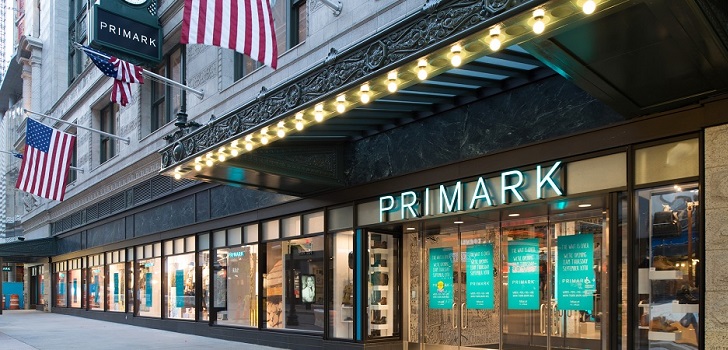Is Primark model over? Low-cost king grows at historic minimums
The Irish chain accelerated its expansion in full crisis, coinciding with the decrease of acquisitive power around Europe, its main market. Now, already settled in recovery, it keeps on trying to find its United States model and brands have gained it ground again.

The low-cost formula is draining out. Or at least that can be deduced from last Primark’s results. After eight years of double digits growth, the Irish chain has ended 2018 with its lowest evolution since 2006, the first fiscal year with available data. The king of volume and low costs, which took to fashion the large consumption model and who conquered Europe in full crisis, has not managed to keep up during the already settled recovery despite continuing to open stores and markets. Is the era of cheap clothing coming to an end?
Primark, owned by British giant AB Foods, has ended the last fiscal year with a revenue of 7.47 billion pounds sterling (8.54 billion euros), only 6% above last year’s figure. Like-for-like sales fell 2.1%, the biggest decrease stated in all their registered data.
The chain gave its green light to international expansion in 2009, coinciding with the beginning of the crisis. That fiscal year meant a turning point for the company, which started to enter new markets and began to accelerate until managing to shoot its sales up a 22% in 2013.
During the following years, the group opened around twenty stores per year, although they managed to keep like-for-like growth rates that reached 7% in 2009 and 5% in 2013.
In 2014, Primark took the gold of fashion from Zara’s hand in Spain in number of buyers, with 6.6 million clients. The Irish company maintained the number in 2015, but started to weaken the following year, the same one as Zara started to get back on its feet, earning market shares one more time.
In 2014, Primark took the gold of fashion from Zara’s hand in Spain in base to number of buyers, with 6.6 million clients. The Irish company maintained the number in 2015, but started to weaken the following year, the same one as Zara started to get back on its feet, earning market shares one more time.
Its first symptoms of weakness in the Spanish market, one of the most important for the corporation, also coincided with a shift of trends on a global scale. Primark went from growing a 15.8% in 2014 (and a 4% like-for-like) to only an 8% in 2015 (1% like for like).
The enterprise tried to undo the tendency with more stores and new markets. The opening rate was highly boosted, reaching a total of thirty last year, in order to make up for the fall of sales.
Back in 2015, Primark landed in the United States, but their ‘amazing fashion at amazing prices’ has not yet fitted into the country. The company has grown cautiously in the North American market, where it currently owns nine stores and is now reshaping its commercial park to take a chance on smaller formats.
From the corporation, however, they do not see exhaustion signs. “Primark has the potential for growth in all of its existing markets”, points out the president of AB Foods, Michael McLintock, in the annual report.
“In the medium term our plans to add further stores in the US, and to enter a number of markets in central and eastern Europe, should support our current rate of selling space expansion”, he adds. For the first time in two years, Primark will enter 2019 in a new country, Slovenia, to which in a short-term will also join Poland.
Less expansion and a weak dollar encourage profitability
Whilst the business keeps on shrinking, Primark’s annual results show a positive fact. The chain’s operating profit scored records last year, with a rise of 14.7%, reaching the 843 million pounds (963 million euros).
The margin, for its part, got back on track after three years in a row decreasing, standing at 11.3%, its best share since 2013. During the last fiscal years, the group has highlighted, statement after statement, that their priority was to keep prices low, due to which it shifted the impact of exchange rates to its margins.
In 2018, however, currencies played in favour of Primark once more. The chain attributed its margin increase on the weakening of the dollar, the currency with which it performs its purchases, as well as on the improvement of its sourcing policies.
Moreover, the corporation has one more ace up its sleeve to improve profitability: less retail investment. Even though Primark continues opening stores up, the year after year growth of their commercial surface has notably reduced in the last fiscal year, with a rise of only 6.8% compared to the 12.3% during the prior one.


info@themds.com
Validation policy for comments:
MDS does not perform prior verification for the publication of comments. However, to prevent anonymous comments from affecting the rights of third parties without the ability to reply, all comments require a valid email address, which won’t be visible or shared.
Enter your name and email address to be able to comment on this news: once you click on the link you will find within your verification email, your comment will be published.